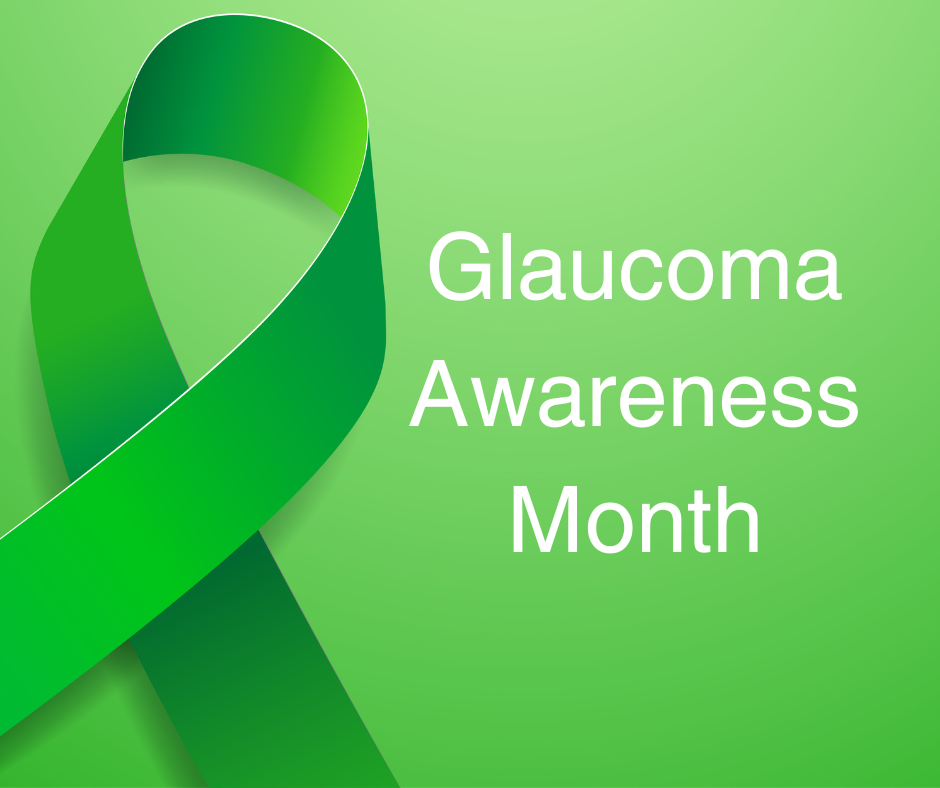Summit Eye Center Blog
Glaucoma Awareness Month

There are 80 million people worldwide diagnosed with glaucoma, and this disease is the leading cause of irreversible blindness in the world.¹
What is Glaucoma?
Glaucoma is a disease that affects the optic nerve. The optic nerves connect each eye to the brain and are responsible for sending visual messages from the eye to the brain to help you see. Glaucoma develops as a result of damage to the optic nerve. Damage to the optic nerve occurs gradually as a result of intraocular pressure.
Risk factors for developing Glaucoma :
- Age 60 and older
- African American, Asian, or Hispanic heritage
- Family history of glaucoma
- High eye pressure
- Thin corneas
- Suspicious appearance of optic nerves with enlarged cupping
- History of a traumatic injury to the eye
What are the signs and symptoms of Glaucoma?
In the early stages of glaucoma there are no symptoms that a patient can notice since glaucoma affects a person's peripheral (side) vision first. Once a person becomes symptomatic of glaucoma with vision loss, the vision loss is permanent and cannot be improved. Glaucoma can cause total blindness if left untreated. Signs of glaucoma, such as enlarged cupping of the optic nerve, thin corneas or an elevated eye pressure, can be determined on an eye exam performed by an optometrist or an ophthalmologist. Regular eye exams are important for early detection of glaucoma.
How is Glaucoma diagnosed?
Glaucoma is diagnosed with an eye exam, and other diagnostic testing such as an OCT (Ocular Coherence Tomography), a non-invasive imaging method, and visual field testing which is used to measure peripheral vision. There is a common misconception that high eye pressure is a cause of glaucoma, but it is only a risk factor. Thirty-three percent of patients diagnosed with glaucoma have normal eye pressures.²
How is Glaucoma treated?
While glaucoma can not be cured,there are many treatment options for glaucoma. Eye drops are the typical first line of treatment of glaucoma and work to lower the eye pressure. Additionally, there are laser treatments, and other minimally invasive glaucoma procedures that can be performed to manage glaucoma. Whether a person has a high, normal or low eye pressure, lowering the eye pressure is how glaucoma is treated.
How can you protect yourself from vision loss due to glaucoma?
Annual comprehensive dilated eye exams are important to monitor for any changes to the optic nerve. Early intervention and treatment of glaucoma can prevent a person from developing any vision loss from the disease. The costs of diagnosing and managing glaucoma are covered under medical insurance including Medicare and other commercial insurance plans.
Summit Eye Center physicians Dr. Skelsey and Dr. Kleinsasser are skilled in diagnosing and managing glaucoma. To learn more or schedule an appointment contact Summit Eye Center at 816-246-2111 or
This blog is authored by Taylor Oswald, ophthalmic assistant and University of Missouri Kansas City- Health Sciences Intern.
Citations
Bright Focus Foundation. (2022, October 22). Glaucoma: Facts & figures. BrightFocus. https://www.brightfocus.org/glaucoma/article/glaucoma-facts-figures
Klein, B. E. K., Klein, R., Sponsel, W. E., Franke, T., Cantor, L. B., Martone, J., & Menage, M. J. (1992). Prevalence of glaucoma. Ophthalmology, 99(10), 1499–1504. https://doi.org/10.1016/s0161-6420(92)31774-9
